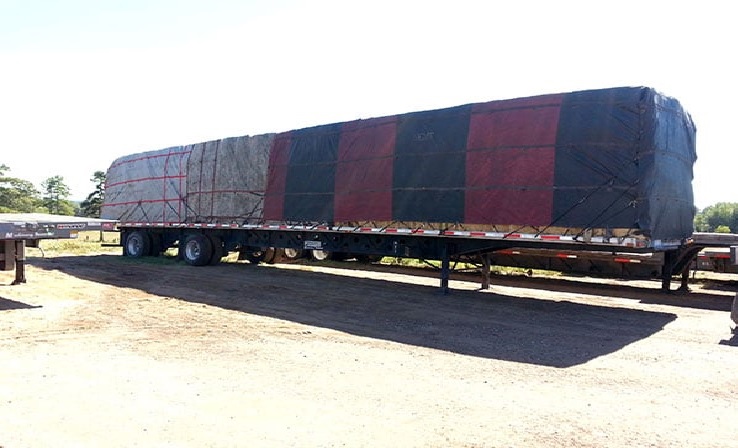Operating flatbed equipment entails dangers to the drivers who are responsible for carrying large loads on a daily basis. It’s common knowledge in the business that driving an old-school flatbed presents some of the most common and possibly hazardous dangers.
The fundamental structure of flatbed operation has altered little throughout the decades. The majority of risk considerations are “built-in” to both the equipment and the nature of the freight historically handled by flatbeds. The following are four typical danger factors associated with flatbed equipment:
Tarping
Tarping is necessary for around 60% of flatbed shipments. It’s a dangerous job that a driver regularly does numerous times every day, increasing the likelihood that something catastrophic may happen eventually. Throwing and dragging canvas tarps into position, which may weigh up to 200 pounds, is a perfect storm situation for strains, muscle rips, and back injuries. Tarping also commonly necessitates the driver climbing on top of the cargo, up to 13 feet over the rough pavement below—with no safety handholds or net. While the unloaded flatbed deck is usually five feet from the ground (a fall from four feet is considered serious enough to inflict brain damage), the higher fall from atop the cargo might be disastrous. Where there are no established tarping places for freight, carriers must rely on spontaneous roadside spots with insufficient clearance from rushing vehicles.
Loading/Unloading Dangers
Another region where flatbeds are particularly vulnerable. Forklift trucks on an open flatbed may drive over the edge of the deck, creating a deadly injury risk to everyone close. Due to the nature of flatbed freight, some cargoes must be loaded or unloaded by cranes or other remotely controlled equipment from a distance. During the procedure, this separation raises the risks on and around the trailer. Furthermore, unusually shaped or large flatbed freight may be unstable until fully strapped down. Heavy freight may roll or tumble abruptly, causing catastrophic harm to anybody working on or near the trailer. Shippers’ experience in loading freight might also be a problem if they are not especially trained in flatbed loading. Drivers may be hesitant to interfere and reprimand clients who are loading the trailer in an unsafe way on the road or while unloading at the destination.
On-the-Road Dangers
Because of its enormous, irregular form, flatbed freight may provide a higher risk of load shifting in travel to a driver than freight contained in a normal van trailer. Because many flatbeds lack protective front bulkheads, drivers are in grave danger if heavy freight slides forward and strikes the cab during a situation such as a quick halt or a collision. Furthermore, particular hazards exist when extremely tall weights collide with overhead obstructions.
Dangerous Locations
Flatbeds routinely carry cargo to construction zones or other improvised loading/unloading places that provide few of the safety safeguards that traditional trailer drivers enjoy in regular freight facilities. Injuries more often associated with construction work than freight carrying, such as puncture wounds from sharp items, exposure to hazardous compounds, electrical risks, and so on, are more common among flatbed drivers.
Flatbed Equipment INC may remove or considerably minimise some of the dangers associated with flatbed equipment near me while still supporting numerous loads that needed a flatbed in the past. Simply eliminating the dangerous task of tarping eliminates a significant source of possible injuries, not to mention enhancing the possibilities of hiring and maintaining professional drivers.





More Stories
What 2025’s Credit Limits Mean — And How to Access Cash Fast
Integrating Information Usage Fees in Mobile Wallets for Seamless Transactions: A Comprehensive Guide
Complete Guide to Selling Digital Products Using MicroCommerce